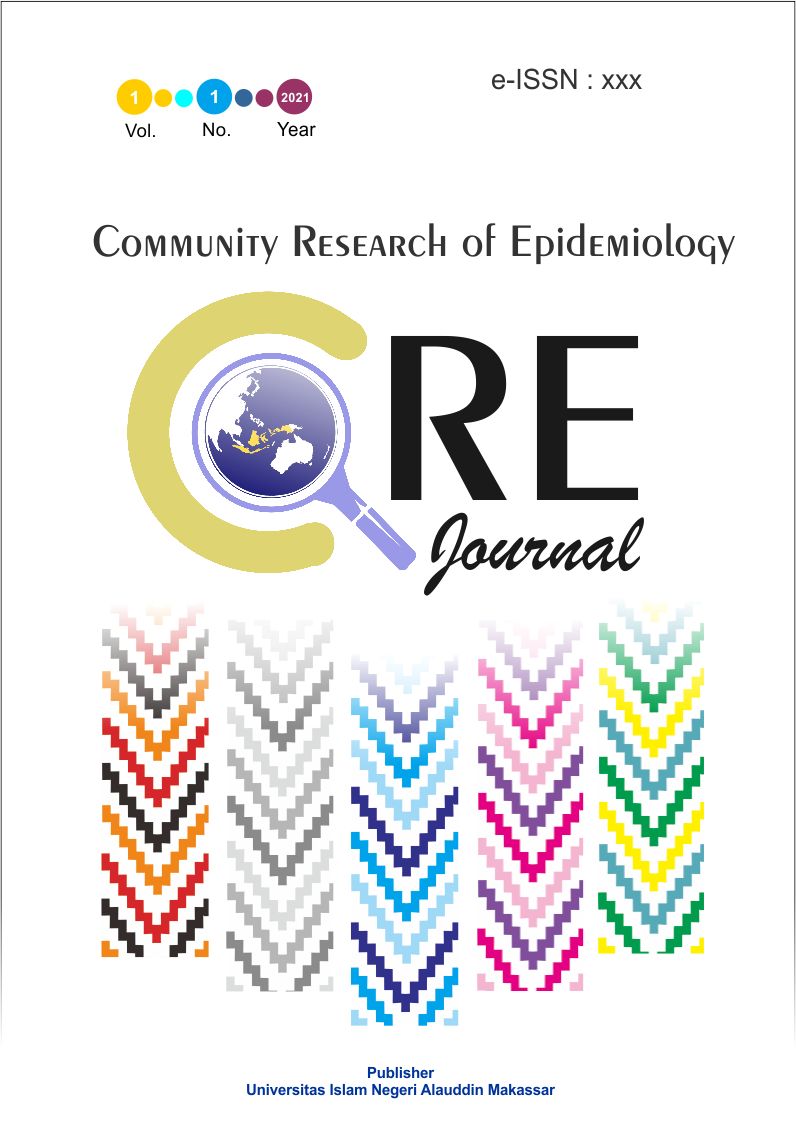Food parenting and health status of malnutrition toodlers in Kendari, 2015 : A qualitative study
Abstract
Insufficient food and health parenting for children has the most important role that causes malnourished problem. The prevalence of malnutrition in working area of Puskesmas Mekar (Public Health Center) reached 26,3% in 2013, and decreased to be 10,5% in 2014. The purpose of the research is to do an in-depth analysis on food and health parenting for the under-five children with malnutrition in working area of Puskesmas Mekar of Kendari Municipality. This is a qualitative research that uses phenomenological approach. The informants were chosen by using purposive sampling technique. The result of the research showed that the food and health parenting for the under-five children with malnutrition in working area of Puskesmas Mekar I n the case of food type provided for children were generally breast milk, rice with side dishes, and porridge. The feeding schedule is in the morning, in the afternoon, and in the evening, while the feeding frequency is 2-4 times in a day, however it is usually done with uncertain time. The feeding technique is conducted differently depends on the nursemaid. For the situation when feeding, the nursemaid commonly feeds the children while walking and watching TV. Not only the nursemaid feeds the children but also family like grandmother, father, and sister. Puskesmas usually solves the malnutrition problem by providing milk and special porridge, monitoring the body weight of children, and administering training for the nursemaid. While the health parenting for the under-five children with malnutrition in working area of Puskesmas Mekar, for sleeping schedule, the children usually sleep at two golden time namely day time and night time; the monitoring to children when playing is conducted by both the nursemaid and her family. For seeking medicine, the nursemaid usually gives traditional treatment at home such as giving febrifuge, and compressing. For health and environmental sanitation, washing hands habit done by the nursemaid is good enough. The health officers give special treatment to the malnourished children by providing them milk and special porridge, monitoring the body weight of children, and administering training for the nursemaids
References
Lupitasari, Widian, S. 2011. Pola Perilaku Asuh Kesehatan Pada Anak Balita di Keluarga Lapisan Bawah (Studi Deskriptif Kualitatif Tentang Pola Perilaku Asuh Kesehatan Pada Anak Balita di Keluarga Lapisan bawah Desa Pomah, Kecamatan Tulung, Kabupaten Klaten (Skripsi). Universitas Sebelas Maret.
World Health Organization, UNICEF, The World Bank. 2014
Mengistu, Kebede, Alemu, K, et al., 2013. Prevalence of Malnutrition and Associated Factors Among Children Aged 6-59 Months at Hidabu Abote District, North Shewa, Oromia Regional State. Institute of Public Health, College of Medicine and Health Science, University of Gondar, Gondar, Ethiopia.
Badan Penelitian dan Pengembangan Kesehatan (Balitbangkes) Depkes RI. Riset Kesehatan Dasar (Riskesdas) 2013. Jakarta: Balitbangkes Kemenkes RI, 2013.
Dinkes Prov. Sultra. 2013. Profil Kesehatan Sulawesi Tenggara tahun 2013. Sulawesi Tenggara.
Puskesmas Mekar. 2014. Profil Puskesmas Mekar Tahun 2014. Puskesmas Mekar. Kendari, Sulawesi Tenggara.
Prasetyono, Dwi. 2012. Buku Pintar ASI Eksklusif : Pengenalan, Praktik, dan Kemanfaatan-kemanfaatannya. Diva Press. Jogjakarta.
Adriani, M, Kartika, V. 2013. Pola Asuh Makan Pada Balita Dengan Status Gizi Kurang di Jawa Timur, Jawa Tengah dan Kalimantan Tengah Tahun 2011. Buletin Penelitian Sistem Kesehatan Vol. 16 No. 2 April 2013.
Pudjiadi, S., 2005. Ilmu Gizi Klinis Pada Anak. Jakarta: Balai Penerbit FKUI
Depkes. RI. 2005. Buku Kesehatan Ibu dan Anak. Bandung: PT. Enka Parahiyangan.
Hurlock, E.B. 1991. Perkembangan Anak, Jilid 2. Jakarta : Erlangga


